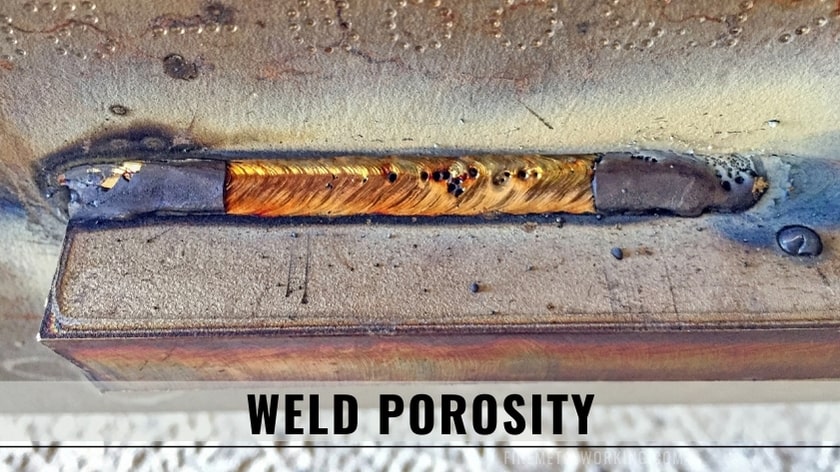What is Porosity in Welding: Necessary Tips for Achieving Flawless Welds
Deciphering the Enigma of Porosity in Welding: Tips for Minimizing Flaws and Maximizing Quality
In the intricate world of welding, porosity stays a relentless challenge that can significantly affect the top quality and integrity of bonded joints. Comprehending the variables that add to porosity development is essential in the quest of remarkable welds. By deciphering the mystery of porosity and carrying out effective approaches for issue minimization, welders can elevate the criteria of their job to accomplish superior quality outcomes. As we look into the midsts of porosity in welding, revealing the keys to its prevention and control will certainly be vital for professionals seeking to understand the art of top notch weldments.
Recognizing Porosity in Welding
Porosity in welding, a common issue experienced by welders, refers to the visibility of gas pockets or gaps in the welded product, which can jeopardize the honesty and high quality of the weld. These gas pockets are usually trapped throughout the welding procedure due to various factors such as improper securing gas, polluted base materials, or wrong welding parameters. The formation of porosity can compromise the weld, making it prone to breaking and rust, inevitably bring about structural failures.
By identifying the importance of maintaining appropriate gas shielding, ensuring the sanitation of base materials, and optimizing welding setups, welders can dramatically decrease the likelihood of porosity development. On the whole, an extensive understanding of porosity in welding is vital for welders to produce premium and durable welds.

Typical Root Causes Of Porosity
When inspecting welding processes for possible top quality issues, understanding the common root causes of porosity is essential for maintaining weld integrity and protecting against architectural failings. Porosity, defined by the existence of dental caries or spaces in the weld metal, can considerably jeopardize the mechanical properties of a bonded joint. One usual reason of porosity is incorrect shielding gas insurance coverage. Insufficient shielding gas flow rates or inappropriate gas mixtures can cause climatic contamination, leading to porosity development.
In addition, welding at improper parameters, such as excessively high travel speeds or currents, can produce too much disturbance in the weld swimming pool, trapping gases and triggering porosity. By attending to these common reasons through proper gas protecting, material preparation, and adherence to optimum welding parameters, welders can click for more info reduce porosity and improve the top quality of their welds.
Strategies for Porosity Prevention
Implementing efficient safety nets is vital in decreasing the event of porosity in welding procedures. One technique for porosity prevention is making sure appropriate cleaning of the base steel prior to welding. Contaminants such as oil, grease, rust, and paint can cause porosity, so comprehensive cleansing utilizing appropriate solvents or mechanical approaches is necessary.

An additional trick safety net is the selection of the ideal welding consumables. Using high-grade filler products and protecting gases that appropriate for the base metal and welding procedure can significantly reduce the risk of porosity. Additionally, maintaining proper welding parameters, such as voltage, existing, travel speed, and gas flow price, is important for porosity avoidance. Differing the suggested settings can cause inappropriate gas insurance coverage and additional reading poor blend, resulting in porosity.
Furthermore, employing appropriate welding techniques, such as preserving a constant traveling rate, electrode angle, and arc length, can aid avoid porosity (What is Porosity). Adequate training of welders to guarantee they adhere to best techniques and quality assurance procedures is additionally vital in lessening porosity defects in welding

Ideal Practices for High Quality Welds
One key technique is maintaining correct sanitation in the welding area. look at this website Extensively cleansing the workpiece and surrounding location prior to welding can assist mitigate these concerns.
Another finest technique is to carefully choose the suitable welding criteria for the details materials being joined. Appropriate criterion choice ensures ideal weld penetration, combination, and general top quality. Making use of high-grade welding consumables, such as electrodes and filler metals, can dramatically impact the final weld high quality.
Importance of Porosity Control
Porosity control plays a crucial function in making certain the stability and quality of welding joints. Porosity, characterized by the existence of cavities or voids within the weld steel, can dramatically compromise the mechanical buildings and architectural integrity of the weld. Excessive porosity damages the weld, making it extra at risk to cracking, rust, and general failing under functional lots.
Reliable porosity control is essential for keeping the desired mechanical properties, such as strength, ductility, and toughness, of the welded joint. What is Porosity. By decreasing porosity, welders can enhance the general quality and integrity of the weld, making certain that it fulfills the performance needs of the intended application
Additionally, porosity control is crucial for achieving the wanted visual appearance of the weld. Extreme porosity not only weakens the weld but likewise diminishes its visual allure, which can be essential in industries where appearances are very important. Proper porosity control methods, such as using the correct shielding gas, managing the welding specifications, and making certain correct tidiness of the base materials, are necessary for generating high-quality welds with marginal defects.

Conclusion
To conclude, porosity in welding is a common issue that can jeopardize the quality of the weld. By comprehending the sources of porosity and carrying out proper prevention strategies, welders can lessen issues and attain higher quality welds. It is vital to regulate porosity in welding to guarantee the stability and strength of the final item. Applying ideal methods for porosity control is important for attaining ideal welding results.